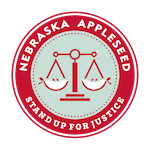 Our good friends at the Center for Rural Affairs released a report this week that examines how the Affordable Care Act (ACA) will revive and sustain small towns, farms and ranches. As Nebraska gears up for implementing the final crucial pieces of the ACA, this report provides valuable information concerning Nebraska’s unique urban-rural makeup. The issues discussed in this report will help to enrich the conversation that will take place in the coming months regarding the implementation of the ACA. The following is from CFRA’s press release of the report:
Our good friends at the Center for Rural Affairs released a report this week that examines how the Affordable Care Act (ACA) will revive and sustain small towns, farms and ranches. As Nebraska gears up for implementing the final crucial pieces of the ACA, this report provides valuable information concerning Nebraska’s unique urban-rural makeup. The issues discussed in this report will help to enrich the conversation that will take place in the coming months regarding the implementation of the ACA. The following is from CFRA’s press release of the report:
According to a new report to be released July 6, 2011 by the Center for Rural Affairs, nearly 15 million young adults (19-29 years of age) in America are without health insurance. However, the report estimates that over 12 million of that young adult uninsured population will obtain coverage under provisions of the Affordable Care Act. These provisions are especially important for small towns and rural areas.
The report examines how the Affordable Care Act significantly benefits young adults, specifically those in rural areas, with provisions that include the ability to remain on their parents’ policies, the creation of health insurance marketplaces, the elimination of pre-existing conditions, and incentives for employers to provide coverage.
According to Charney’s report, of the approximately 7 million rural residents between 20 and 29 years of age, 600,000 will be eligible to remain on their parents’ health insurance until age 26 pursuant to the Affordable Care Act. Nationally it is estimated that 3.4 million young adults will be eligible for coverage under this provision.
The author concludes that access to affordable, quality health insurance means more young adults can stay, return, or relocate to rural communities. Young farmers, entrepreneurs, and rural health care providers not only have much to gain from the Affordable Care Act, but they also have valuable skills and knowledge to contribute to rural communities.
